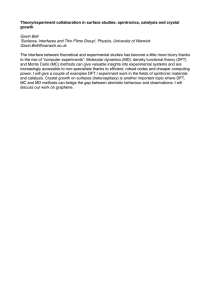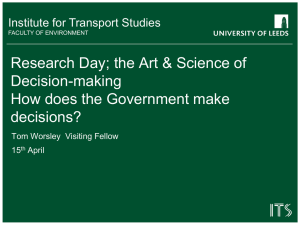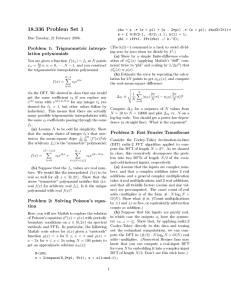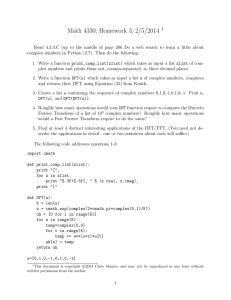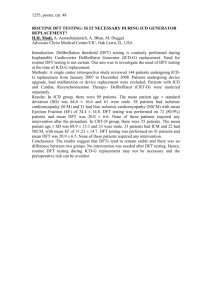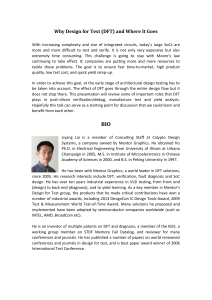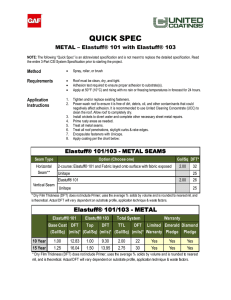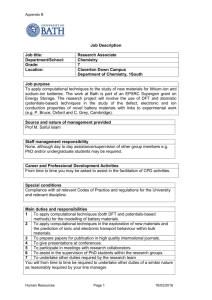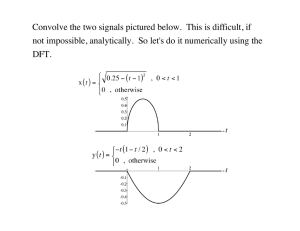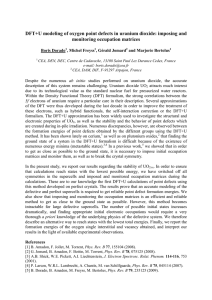Presentation 01
advertisement
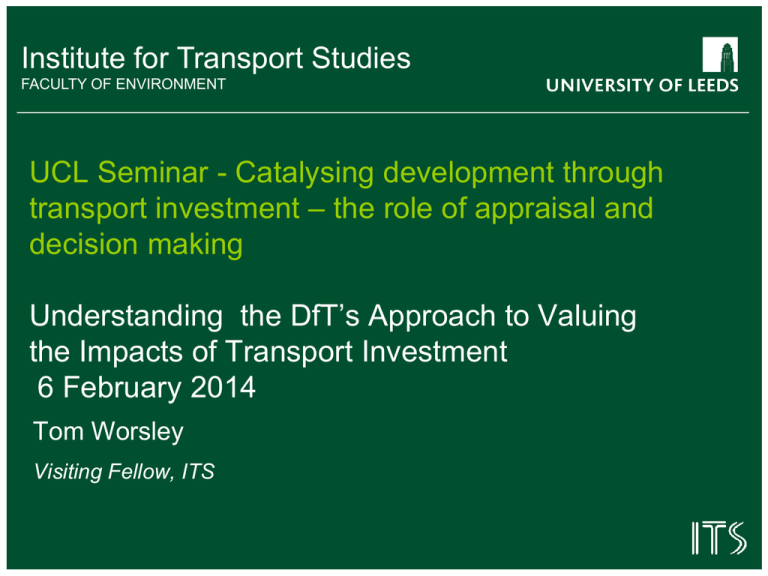
Institute for Transport Studies FACULTY OF ENVIRONMENT UCL Seminar - Catalysing development through transport investment – the role of appraisal and decision making Understanding the DfT’s Approach to Valuing the Impacts of Transport Investment 6 February 2014 Tom Worsley Visiting Fellow, ITS Transport Cost Benefit Analysis – the main features • Comparative form of analysis compare one option with another • Comprehensive coverage of all of the impacts of a scheme • A national level, society wide assessment • Deals with the future through forecasting and discounting • Relies on transport model to estimate changes in user costs and responses • Money values, based on market prices or willingness to pay, used to value impacts where possible plus information on other effects • An output is a value for money metric • Methods capable of repeated application and by different levels in an administration - WebTAG DfT WebTAG Impacts Impacts • Economy • Business and CV time (and time related) and other cost savings, agglomeration, labour market effects, regeneration • Society • Commuting and other time and cost savings, accidents, security, accessibility, severance, physical activity • Environment • Climate change, air quality, noise, bio-diversity, townscape, landscape, water, heritage • Public Accounts • Capital and on-going costs less revenues and private sector funding, changes in tax receipts DfT WebTAG Valuation Market prices • Capital, maintenance, operating costs, revenues (a transfer) Willingness-to-pay • SP and RP - time savings, noise, accidents Cost based values • eg MACC for carbon Unquantified impacts • Descriptive scale – serious, moderate, slight – negative, positive. Measuring the benefits of a transport scheme Transport has wide reaching effects – an influence on economic growth, makes cities function, regenerates peripheral regions, facilitates social interaction Improvements/ stopping deterioration of transport and travel conditions also contribute at the margin to all of these objectives However, measuring the impact of a transport scheme on how a city might function is ‘too difficult’ – no direct link However, we can estimate travel time savings from analysis of changes in demand and supply in the transport model In the longer run, travel time savings are often used to provide for changes in the level and location of economic activity, benefits from which time savings provide an approximate measure. Metrics and decisions Appraisal is aimed at informing the decision maker The initial metric is the BCR – ‘bangs for buck’ measure DfT sets categories; • Low 1.0:1 – 1.5:1 • Medium 1.5:1 – 2.0:1 • High 2.0:1 – 4.0:1 • Very high >4.0:1 Steps to determining VfM • Take BCR category • Review unquantifiables – might they be enough to change category? Most schemes approved are ‘high’ or ‘v. high’ VfM DfT’s New Analytical Strategy Evidence review: • International comparisons, reviews of value of travel time savings, review of regional economic impacts Promulgation, better explanation of methods and simplification of WebTAG: • Understanding and Valuing the Impact of Transport Investment (gov.uk) Programme of research: • Impact of transport investment on productivity and economic geography • To work out how best to update and improve the current values o travel time savings • To make better allowance for risk and uncertainty in forecasts and hence in appraisal
